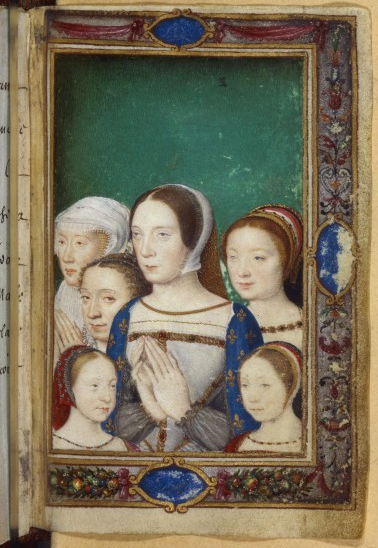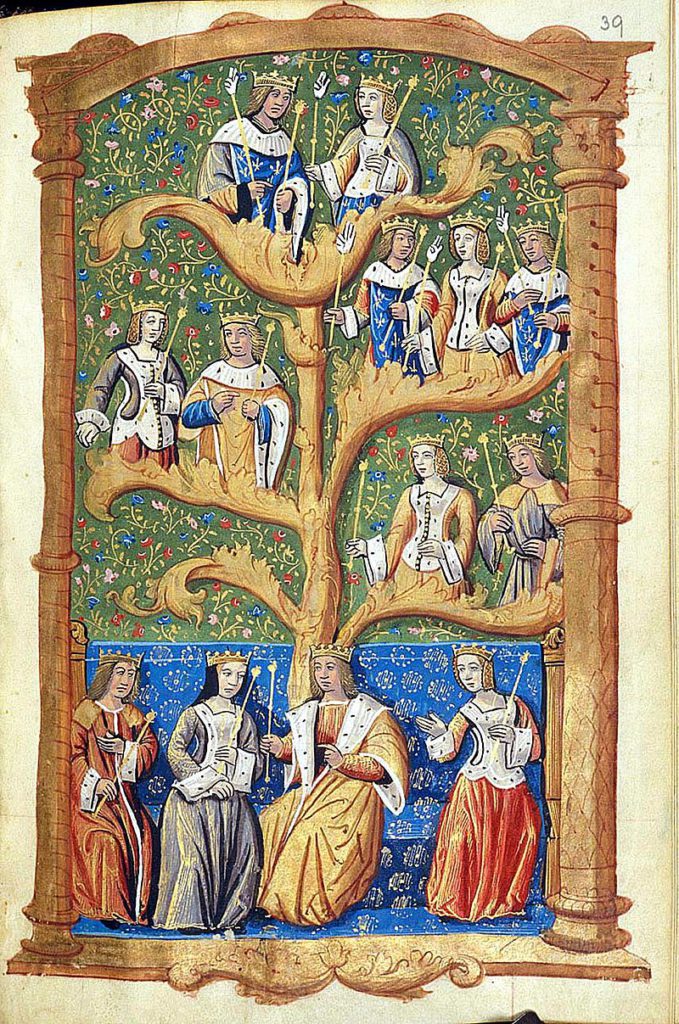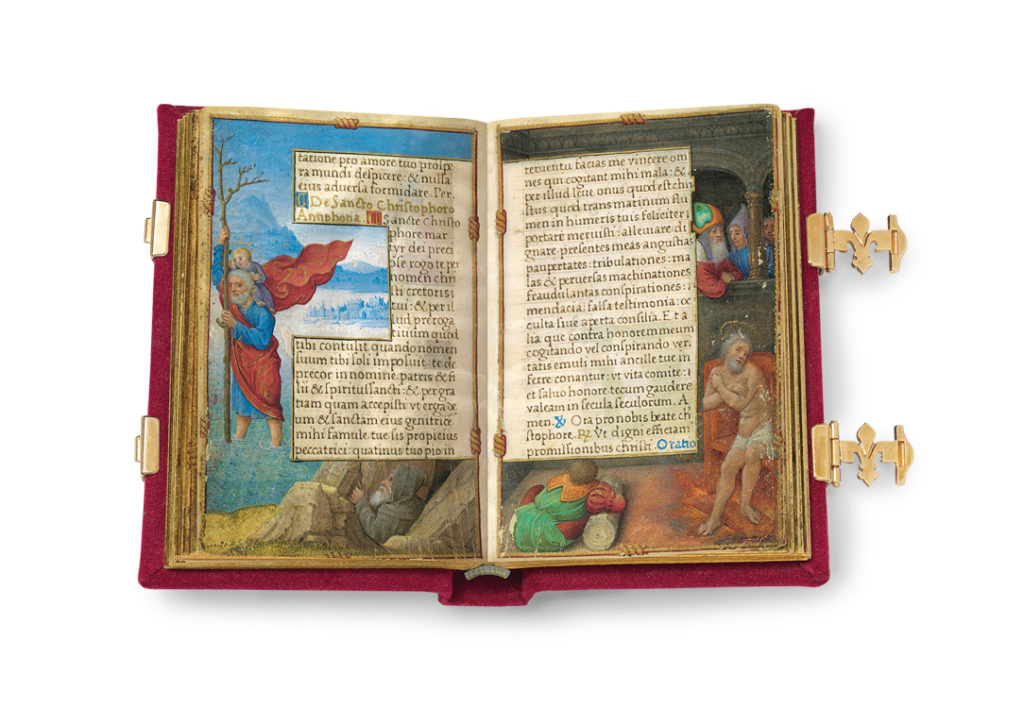
Queen Claude of France, the eldest daughter of King Louis XII of France from his marriage to Anne of Brittany and the first wife King François I of France, died on 20th of July 1524 after a brief illness (or on the 26th of June 1524 according to various sources), at the age of only 24 at Château de Blois and was temporarily laid to rest in the chapel there. Later her body was moved to the Basilica of Saint Denis just outside Paris in 1527.
Although she was Louis’ eldest surviving daughter, the Salic law prevented Claude from obtaining the crown of France in her own right. When her father passed away on the 1st of January 1515, François d’Angoulême, her cousin and husband, ascended to the throne, making Claude his consort. Mary Tudor, the Dowager Queen of France, was supposed to return to England after her controversial nuptials with Charles Brandon, Duke of Suffolk, which were conducted without the permission of the English monarch, but with the encouragement of the new French ruler.
Antonio de Beatis, secretary to the Cardinal of Aragon, said about Claude’s appearance:
“The Queen is young and though very small in stature, plain and badly lame in both hips, is said to be very cultivated, generous, and pious.”
The Austrian ambassador described the Queen of France:
“She was a retiring young girl with a pale complexion, thin, a little sickly, slightly hunchbacked, and rather unattractive.”

During her marriage with François, Claude was almost constantly pregnant or recovering from birth or miscarriages if she had any. Being very pious and devoted to Catholic religion, she was also drawn to spiritual matters. Not liking the public like and being at the center of attention, Claude withdrew from the extraordinarily extravagant French court and spent most of the time at Amboise and Blois. Unfortunately, she could not have competed with her husband’s beautiful mistresses such as Françoise de Foix, Countess de Châteaubriant, who was François’ maîtresse-en-titre from about 1518 to 1528 when she was replaced with Anne de Pisseleu d’Heilly.

Queen Claude was a great patroness of the art of the miniature. She commissioned two exquisite works – The Prayer Book of Claude of France in 1511 and the Book of Hours in 1517. In her Prayer Book, Claude’s coat of arms appears on three different folios. This book is richly illustrated: the borders of each leaf were painted, front and back, with 132 scenes from the lives of Christ, the Virgin Mary, and saints. At present, the Morgan Library and Museum located in New York City, the USA, has the entire Book on Prayers on virtual display for visitors.
When the news about Claude’s death reached François, he was reportedly grief-stricken. Unlike Henry VIII who didn’t care about his wives in the second half of his life and could easily get rid of them if it suited his interests, the King of France genuinely mourned the loss of his queen. Although François was infamous for his womanizing ways, he respected his wife for her humility and tolerance of his infidelities.
The Valois monarch is known to have said about Queen Claude’s passing:
“If I could bring her back with my life, I would gladly do so.”

Anne Boleyn served in Queen Claude’s household for about 7 years. Although Anne was one of Mary Tudor’s attendants, she stayed in France, serving the new Queen of France – Queen Claude of France. We don’t know how and why Anne stayed in France, but it is possible, according to Eric Ives, that the young Claude took a liking to Anne and offered her a place in her household. Perhaps Anne acted as an interpreter between Claude and Mary Tudor.
There are some people who slander the name of Anne Boleyn and consider her a whore who was influenced by the frivolities blossoming at the French court. But how can it be true? After all, Anne served no other queen but Claude, who was known for her extreme piety, strict moral code, and appreciation of modesty, and who spent much time away from the royal court due to her frequent pregnancies. If Anne had led a notorious life in France, she could have been dismissed and sent back home disgraced. I think that Anne returned from France to England a virgin.
There are not many contemporary records about Anne’s life in France, but we can make assumptions. It is likely that Anne took part in the coronation of Queen Claude at the Basilica of Saint Denis in May 1516 and in her grand entrée into Paris. Claude was present at the banquet given in honor of the visit of the English diplomats sent to negotiate a marriage between the Dauphin of France and Henry VIII’s daughter, Princess Mary, at the Bastille in December 1518, and also at the Field of Cloth of Gold in June 1520 just outside Calais. As the French queen was accompanied by her ladies at both events, Anne could have been useful as an interpreter.
Eric Ives writes that Queen Claude appeared with pomp during the Field of Cloth of Gold:
“She [Claude] wore cloth of silver over an underskirt of cloth of gold and rode in her coronation litter of cloth of silver decorated with friars’ knots in gold, a device which she had taken from her mother. Her ladies rode in three carriages similarly draped in silver and, no doubt, were dressed to match the queen.”

According to Ives, Queen Claude and her ladies were also present at the magnificent feast attended by the two monarchs, as well as by English and French ladies. If Anne really was at the Field of Cloth of Gold, she could have seen her future husband and murderer, King Henry, there. Many happy moments of Anne’s life were connected with France, perhaps being the golden days of her early youth when she was growing into a sophisticated, intelligent, and exotic flower.
Despite Claude’s short life and the lack of pure happiness in her matrimony with François, the marvelous queen seems to have found consolation in her children. Claude is well remembered in France. Her memory lives in the illuminated manuscripts and Prayer Books which she owned and inspired other French nobles to create. The tribute to Claude lives on in the “Reine Claude” plum, which is a richly flavored cultivar of the fruit introduced into France from Italy during François’ reign and named after his queen. They are also known as “la bonne reine”, which means in English “the good queen” plums, in honor of Claude’s gentility and benevolence.
All images are in the public domain.
Text © 2020 Olivia Longueville





